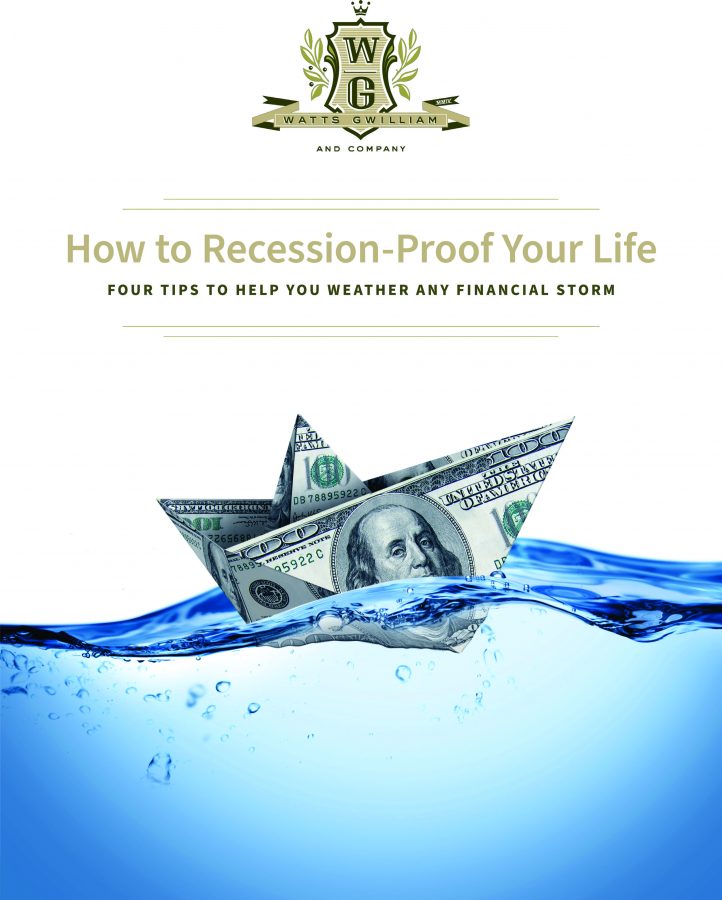How to Avoid 5 Common Investor Mistakes
2022 has been a difficult year for all investors. Stocks and bonds are both down double digits, and many investors do not know where to turn. As an investment advisor in Gilbert, AZ, we see investors make many mistakes in times like this. We will discuss 5 of the most common ones here:
1. Chasing Returns
Studies show that as a whole, mutual fund shareholders chase returns by buying more when past returns are high and selling more when past returns are low. When markets are down, individuals will look at their portfolio and often sell what isn’t working today and replace that with investments that are at recent highs. Mutual funds are very aware of this tendency, and because of this, they often market their recent returns. Recency bias can be a huge detriment to portfolio success. Buying low and selling high works- chasing returns does not. When investors chase returns in mutual funds, they allocate more money to the funds that have strong recent performance. Mutual fund managers find themselves in a difficult situation. They have large inflows of cash that need to be placed into investments that are relatively expensive. They are stuck “buying high”, adding risk to the portfolio. We prefer to follow the advice of Warren Buffet when he says, “Be fearful when others are greedy and be greedy when others are fearful”.
What should you do instead of chasing returns? You should have discipline. Construct a diversified portfolio and rebalance that portfolio regularly. Rebalancing a portfolio is a way to sell investments that are high and buy investments that are low. Again, that is the recipe for success. By rebalancing, you are trimming investments that have run up and are overweight in the portfolio (selling high). That cash can then be used to buy assets that are cheaper and have a lower allocation than they should have (buying low).
2. Focusing on Things Out of Their Control

The second common mistake that we notice is that investors tend to concentrate on things that are out of their control. In 2022, we have seen this first-hand. Investors have spent so much time focusing on inflation and what it has done to the market. There has also been a huge spotlight on Fed policy as we have seen interest rates going higher for the first time in years. Now investors are wondering what impact inflation and Fed policy are going to have on earnings. On top of that, we have down years in both stocks and bonds that are big concerns for investors. Although these issues are obvious concerns, there is nothing that investors can do to control the outcomes. Markets are going to do what markets are going to do.
Instead of focusing on the things you cannot control, we recommend concentrating on things that are in your control. For example, spend time focusing on your asset allocation. Is your allocation to stocks, bonds, and alternative investments appropriate for your time horizon and your risk tolerance? Do you have an allocation that gives you investments into assets that are uncorrelated with each other? Uncorrelated assets can significantly reduce the volatility of the portfolio and increase returns. Asset allocation is something that you can control. It is something that can significantly increase the overall returns of your portfolio.
In addition to asset allocation, you can focus on the liquidity of your portfolio. If you are drawing from your portfolio to meet your day-to-day expenses, look at how much liquidity you have in the portfolio to meet these needs. If you are retired and pulling from your portfolio, we recommend taking a bucket approach to investing. We advise placing at least one year of expenses in a short-term bucket. The short-term bucket should be fully liquid, safe, and available for you to draw on to meet your day-to-day expenses. We then recommend adding another 5-7 years’ worth of expenses in an intermediate-term bucket. Intermediate bucket money should be allocated to investments that have a very high probability of success over a 2-7 year period. By having the correct allocation to a short-term and intermediate-term bucket, the remainder of your assets can go into growth investments. The growth bucket is made up of our favorite long-term investment ideas. Because you have money in short- and intermediate-term buckets, the growth investments can remain invested throughout all market cycles. Then, there is no need to panic when markets are down- your liquidity needs have been planned for. For more information on our bucket investments, please refer to our previous blog What Percentage of Your Net Worth Should be Invested? Our 3 Buckets Will Tell You.
3. Allowing Emotions to Control Their Decisions
The third mistake we see investors make when markets become volatile is that they allow emotions to control their decisions. Watts Gwilliam and Company has been a registered investment advisor since 2004. Prior to that, our founders worked for a large Wall Street firm. We have seen many down markets. A common theme that we hear from investors each time there is a down market is, “This time is different”. We hear this phrase every single time. Although it is true that the cause of market decline is usually different each time, the result at the end is always the same: markets recover. September 11, 2001, was different- our country had never been attacked like that on our own land. In 2008, the Housing Crisis was different- banks were failing and refusing to lend money. In 2020, the Covid crisis was different- we had not seen an epidemic like that in the United States in over 100 years. Again, the cause of market declines always seems different, but the results end up being the same.
If you have the right time horizon and can wait out a market decline, you will see positive returns. The problem with emotional decision-making is that it often leads to panic selling. When investors panic, they capitulate and decide at the very worst time to sell out of their risky investments. Do not let emotions control your investment decisions. Instead, focus on your long-term financial plan. If you have not set up a financial plan, we recommend doing that right away. It is best to work with a fiduciary, a registered investment advisor. As a registered investment advisor, we are a fiduciary for our clients. All decisions need to be in our clients’ best interest. One of our most important jobs is helping clients manage their emotions.
4. Overemphasizing What’s in the Media

The fourth mistake we see investors often make is an overemphasis on what they hear from the media. The media is compensated for clicks and views, not for sound financial advice. The more they stir the pot, the more clicks they get. The more controversial the topic, the more clicks they get. If you saw two headlines next to each other, with the first one reading, “Diversification works”, and the second headlining reading, “Expert predicts the market to crash 30% in the next 6 months”, which of those headlines do you think would get the most clicks? Again, media is compensated by clicks, views, and advertisements, not advice.
Instead of taking everything, the media says as fact, recognize the media for what it is. It can be a great source of information, but it can also lead to irrational decisions. Rather than taking action based on what you hear from the media, instead, talk with your financial advisor. Discuss what you have heard or read in the media with your financial advisor and come up with a good plan of action together.
5. Failing to Take Advantage of Market Volatility
The fifth mistake that we often see investors make is a failure to take advantage of the market volatility. Volatility is a measure of the market’s fluctuations. When markets drop in value, it is typically accompanied by an increase in volatility. We mentioned earlier in the article that we always want to buy low and sell high, so if market volatility is high, we want to sell volatility. How do we sell volatility? This has been the specialty of Watts Gwilliam and Company since the early 2000s. This is done through strategic covered call selling in our optic strategy. With the Watts Gwilliam Optic Strategy, we are able to capture that volatility and turn it into increased income and reduced risk in your portfolio. More information on the Watts Gwilliam Optic Strategy can be found on our website.
Conclusion
At Watts Gwilliam, we specialize in helping high-net-worth individuals and families construct portfolios that they are comfortable owning in any market environment. Our experience and expertise can help you navigate these difficult times. Contact us to see how we can assist you.
We offer a free, no-obligation conversation with the Gilbert investment management firm Watts Gwilliam & Company. Click here to contact us.
Click here to download our free eBook: “How to Recession-Proof Your Life”

